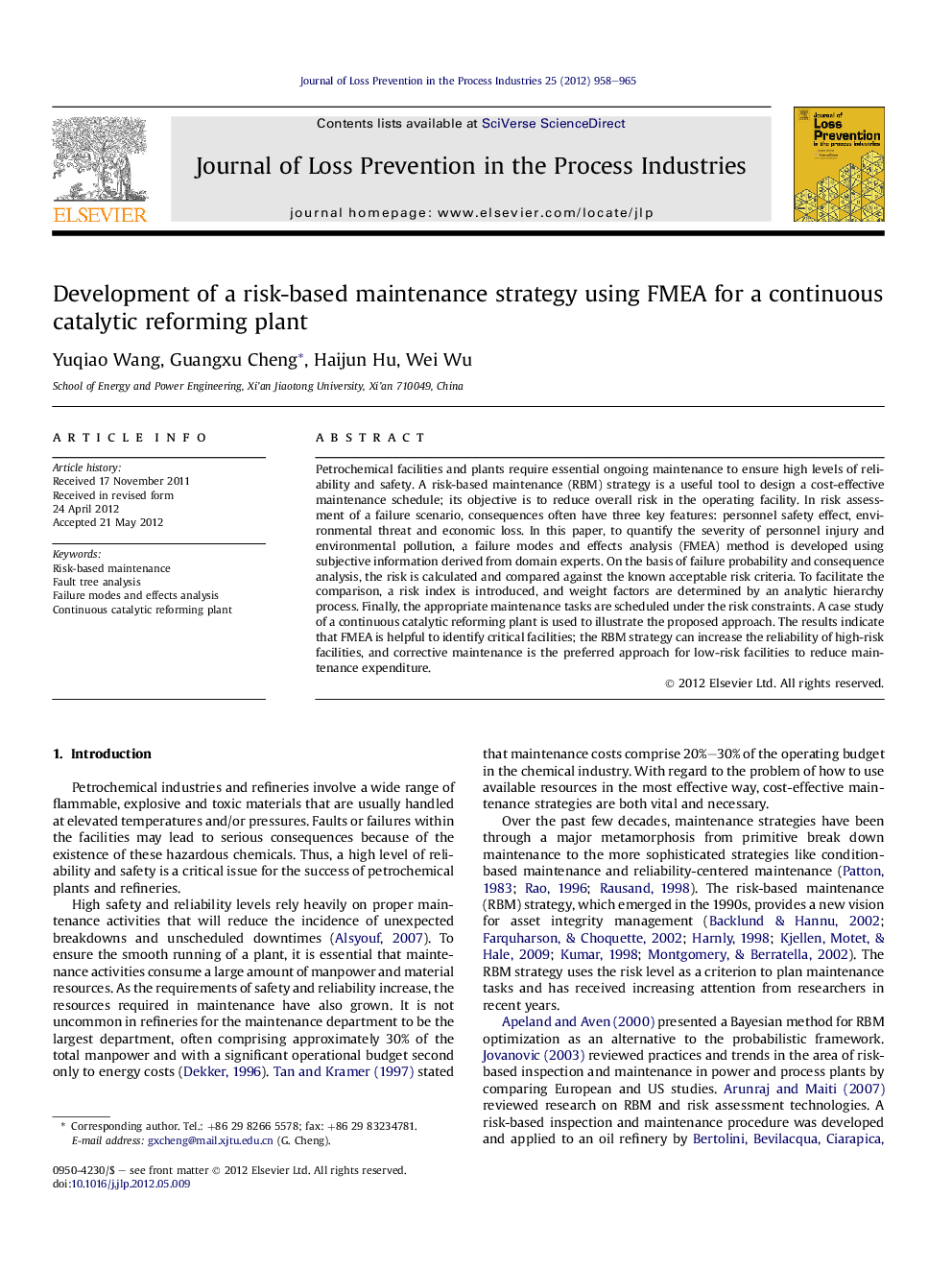| Article ID | Journal | Published Year | Pages | File Type |
|---|---|---|---|---|
| 586256 | Journal of Loss Prevention in the Process Industries | 2012 | 8 Pages |
Petrochemical facilities and plants require essential ongoing maintenance to ensure high levels of reliability and safety. A risk-based maintenance (RBM) strategy is a useful tool to design a cost-effective maintenance schedule; its objective is to reduce overall risk in the operating facility. In risk assessment of a failure scenario, consequences often have three key features: personnel safety effect, environmental threat and economic loss. In this paper, to quantify the severity of personnel injury and environmental pollution, a failure modes and effects analysis (FMEA) method is developed using subjective information derived from domain experts. On the basis of failure probability and consequence analysis, the risk is calculated and compared against the known acceptable risk criteria. To facilitate the comparison, a risk index is introduced, and weight factors are determined by an analytic hierarchy process. Finally, the appropriate maintenance tasks are scheduled under the risk constraints. A case study of a continuous catalytic reforming plant is used to illustrate the proposed approach. The results indicate that FMEA is helpful to identify critical facilities; the RBM strategy can increase the reliability of high-risk facilities, and corrective maintenance is the preferred approach for low-risk facilities to reduce maintenance expenditure.
► Risk of an unexpected event is the criterion to plan the maintenance interval of a facility. ► FMEA is used to judge the severity of personnel injury and environmental pollution. ► AHP is adopted to determine weight factors among three consequence features. ► Corrective maintenance is appropriate for facilities with slight and acceptable consequences.
